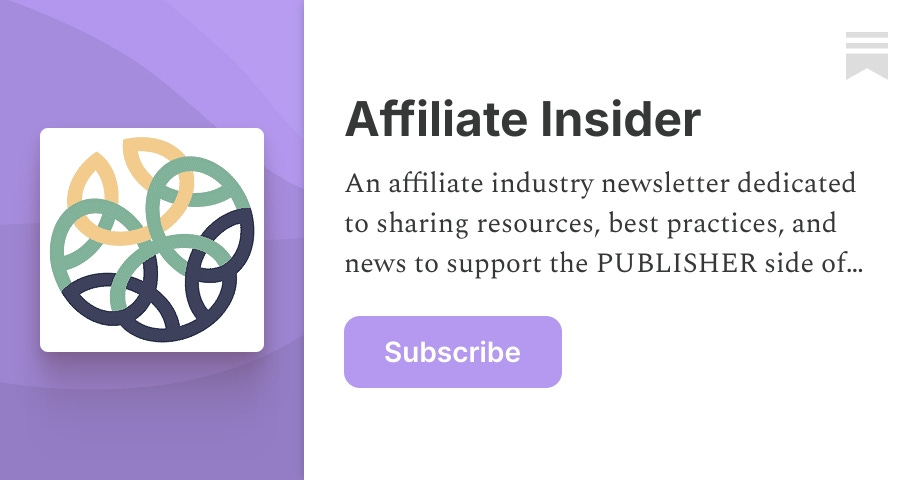- Content Forward: Thoughts from the Front Lines
- Posts
- Budget Constraints? New Content vs Optimizations
Budget Constraints? New Content vs Optimizations
A Content Ops Discussion + New AI Possibilities

Hello again, my content nerds.
Another action-packed week in content.
We’re still in a core update (apparently, there are several cores to update). We’re also in a review update. So, a lot of shuffling is still happening in Google land.
So far, I’m not seeing as significant of an impact as the HCU, but things are still rolling out.
So, while the SERPs do their shuffling again, I’m focusing on the things we can control.
This is why I want to talk about new content vs content optimizations.
Most of us don’t have unlimited budgets and resources, yet we still want to create the best publications. Optimizations can be your best bang for your buck resource-wise, but do you always need to optimize? (Keep reading to find out.)
While we creatively manage our resources, it's also important to keep an eye on technological advancements. While I cannot keep up with all the things happening in AI, something happened this week that I think is great for us content creation types.
Open AI released a Beta for everyone, allowing us to create our GPTs. This is an easy-to-use, no-code solution to create a customizable AI helper using Open AI Technology.
The possibilities for us in content are endless.
With this technology, we can create customizable tools to help our internal content creation processes. We could also develop tools to help our readers navigate our publications or solve a specific problem (which LMS should I use? tool, for example).
We’re just scratching the surface with this technology, and I’m like a kid in a candy store with ideas already.
Create Your GPTs — What all the cool kids are doing these days.
You can now create your GPT. What does this mean? Here are some quick ideas on what we can now easily make:
More powerful, customizable chatbots for your site.
Personal AI content reviewing and editorial assistant
Content optimizer helper bot
Decision-making tool for our readers
Personalized Grammarly tool
Personalized summarizing tool
And so many more! I could spend days just thinking of things to create here!
The possibilities are endless!
I experimented with creating a GPT today. In just a few minutes, I got a ‘working version’ of a more advanced, specific chatbot we could use for one of our publications.
Of course, this was just a test, and it’s not ready for public use yet. I just wanted to see if someone like me could do it!
Some downsides:
The GPT created might work slowly (could you launch this front-facing?). My GPT takes forever to respond to queries.
The data may also be public. Check out this Twitter link.
It’s easy to create something basic but requires some basic understanding of how Chat-GPT and AI work to see great results.
There will still be hallucinations and inaccuracies, so proceed with caution.
You’ll have more ideas than time to create!
Okay. Have fun with this, and if you do try something, let me know. I would love to see what others are doing with this technology.
Now, for the question that keeps me up at night in content ops…

The Question of the Day: New Content vs Content Optimizations
Lately, I’ve been thinking a lot about when to create new content vs when to optimize old, already published content. With the shakeups in the SERPs, the HCU, and ongoing Google updates, this decision is not as clear-cut as it might have once been.
So, what do you do?
In a perfect world where there’s lots of budget, and everything is indexing and ranking beautifully, I will always say, do both!
But the adage “never stop publishing” is short-sided with real-world conditions. I think this can also be true for your content optimization budgets.
After the HCU, you might not want to optimize every article either. Gasp. Shouldn’t we always be optimizing???
Well, like many things in life and marketing… it depends.
Many of us need to be smart, strategic, and scrappy with our content budgets. That means we need a decision-making framework. If that’s you, let’s get into it!
When to Invest in New Content Creation
In the past few months, we’ve been taking a deliberate slowdown approach to creating new content for some of our publications.
Our guidelines for where and when we invest in new content have shifted as we respond to the changing SERPs, prepare for SGE, and focus on other traffic growth channels (outside of Google), and find other ways to distribute content.
Here is where I would invest in new content (and hold the budget to do so):
A site is still indexing and ranking content quickly.
If you have a publication that is still indexing and ranking new content, it’s probably a safe bet that you can continue to publish. Before you do, though, I would still ensure that you publish new content that supports your current content + helps your audience.
The topic or cluster of topics shows promise for quick growth or an ‘easier’ win.
For some of our sites, this is a question we ask ourselves if we’re investing in a new cluster of content or responding to a new trending topic.
Have a look at what is currently ranking. Are all the results big brands? What is the quality of the content in the SERPs? Can we do better? Is this an up-and-coming, lasting trending topic with some legs — if so, we’ll invest.
We’ll double down if our SMEs and editorial believe in this. They are the ones who know these topics better than anyone.
The new content supports a current cluster of content we want to maintain.
Gone are the days when you could outrank with a singular piece of content. Knowing this, we still build into clusters of content. If we see a dangling success (an article that is still doing really well) that is not supported by other pieces of content, we build into that. Think of this as building the foundation around one of your winners!
Do our writers want to write about it?
If our writers are passionate about a topic and can share some unique experiences with our readers, we always want to invest in that content. Our writers live in these worlds; if they feel jazzed and excited about something, we can almost always bet our readers will feel the same way.
When to Optimize and Update Old Content
If you have a ton of content published on your site, your biggest bang for your buck will usually be to update and optimize old content before investing in new content.
Here’s where I would invest in optimization:
Optimizing and updating core pillar pages.
If you’ve been publishing for a while, perhaps it’s time to look at the pillar pages of content. These are those foundational pieces that are core to your site, and they should be updated and maintained continually.
When updating these, I like to think about ways to link new pieces of content and check for any additional insights our writers have shared that we can add to these. I also like to make sure we still stand by our advice and recommendations. Things shift, and I want to make sure we’re always giving our best advice in these core pieces of content.
If we’re slowly slipping in the rankings (i.e. We still get some Google love, but content quality or intent is shifting).
Losing rankings slowly over time tells me that it’s probably not a core update issue, or SERP changes necessarily but that this could potentially be a content quality issue — that we can always improve. When I see this happening, we spend some resources on optimization.
Outdated content that is worth updating.
There are a few things you can do with outdated content. You can either create a new, updated piece of content and replace outdated content, or you can optimize.
Depending on your niche, how outdated the content is, and how relevant it is to your topical authority, it can be great to update and optimize. If you’re still ranking for a term, and it’s an evergreen term, but the advice and content are a little out of date, it’s a great time to update. These are often ‘easier’ wins that can really add up over time.
If we have better experts and more experience to share or know we can do better for our readers, we’ll update that too!
We have several layers of quality checks and optimizations for our publications. As we’re working on things, we often uncover some potential gems for optimizations. If we have an article that pops into our top 300 overall articles that haven’t been on our radar in a while, I have a look. If I know that we’ve got better writers, more first-hand experience, or EEAT for this topic, I’ll let the team see how they could improve it.
Should you ever leave content?
This is a question I ask myself all the time.
With all the shifts in the SERPs and the changing AI landscape, sometimes the best thing you can do for your content publications is just to wait, at least when it comes to adding new content or optimizing current content.
Not every SERP change is a content quality issue.
If I believe we have the best-in-class content but we’ve lost rankings, it just might be best to leave the content as is and focus on other things that can help grow the publication.
Sometimes, leaving the content as is lets us see other areas to improve as well. Sometimes we see improvements when another core update happens, even if we’ve done nothing.
There are no simple, easy answers, but I hope this discussion helps you think more strategically about your overall content budget.
We can get so pumped when we feel like we’re doing ‘something’ that sometimes the best course of action is to take a beat, really look at the big picture, and make more conscious decisions.
That’s what we’re doing.
I hope this advice helps you all prioritize your content budgets this week! Now, let’s get into some great must-read resources.
Things to Read, Watch, and Ponder
This article has created some buzz amongst my SEO and content pals, and for good reason. To continue the many conversations of what the state of search actually looks like these days, AJ Kohn goes deep.
“They’re letting the inmates run the asylum.” — Google is making some big updates, but is this better for searchers? For content creators?
Here are just a few highlights he discusses here…
Why brands are now ranking for almost everything (and why)
How tough it is actually to learn from user data
How easy it is to gamify trust signals such as Trustpilot
How Reddit is impacting search (and why this is a symptom of a larger search issue)
Why standard organic results are getting less love from search
How the flood of even more generic content is hurting search overall
What should be done to improve search overall (some great tactical ideas for Google)
I strongly recommend you brew a drink, sit back, and dig into this resource.
67% of marketers think video has become more important in their marketing this year. Our friends at Content Marketing Institute did a video & visual storytelling survey. Here are the results!
The talented Melissa Popp brings some real tactical strategy to answer the question of how to create top-shelf content with budget constraints. Some great insights here to keep our create vs optimize discussion going. Check it out!
Well, that about wraps it up for this week. I hope you all enjoyed the mid-week bonus I sent out this week.
I’m looking for more contributors for that feature.
If you would like to contribute to Content Forward and help the next generation of those in content, please reach out!
Have another amazing week.
Cheers! Amy
Some Bonus Newsletters You’ll Love
If you want to get into the weeds on these topics, here are a couple of newsletters to subscribe to.









Reply